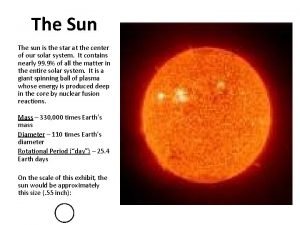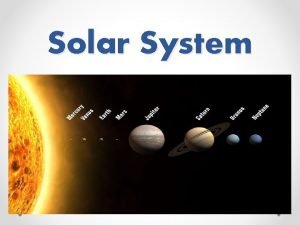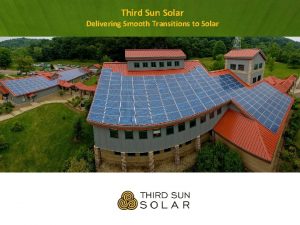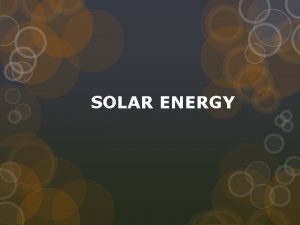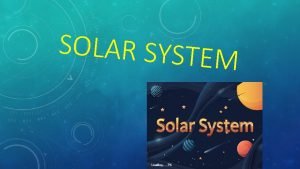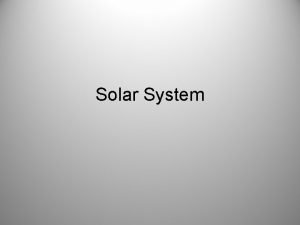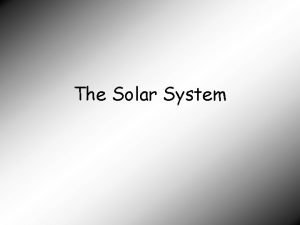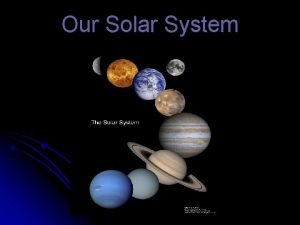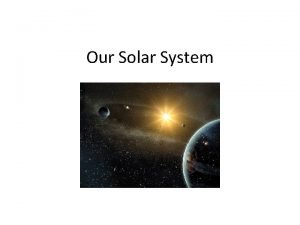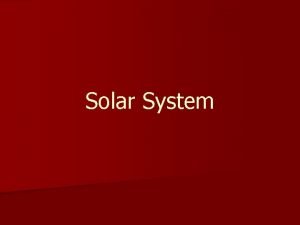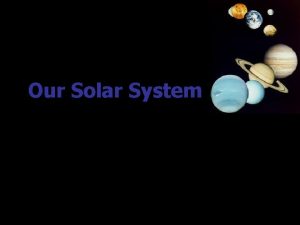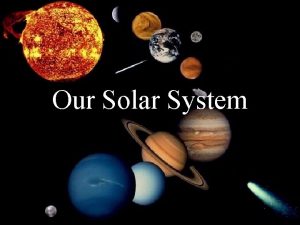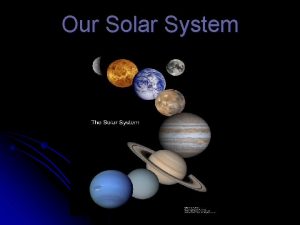Solar System SUN The Sun is the Solar











- Slides: 11

Solar System

SUN The Sun is the Solar System's star and by far its most massive component. Its large mass (332, 900 Earth masses) produces temperatures and densities in its core high enough to sustain nuclear fusion of hydrogen into helium, making it a main-sequence star. This releases an enormous amount of energy, mostly radiated into space as electromagnetic radiation peaking in visible light.

Mercury • Mercury (0. 4 AU from the Sun) is the closest planet to the Sun and the smallest planet in the Solar System (0. 055 Earth masses). Mercury's very tenuous atmosphere consists of atoms blasted off its surface by the solar wind.

Venus • Venus (0. 7 AU from the Sun) is close in size to Earth (0. 815 Earth masses) and, like Earth, has a thick silicate mantle around an iron core, a substantial atmosphere, and evidence of internal geological activity. It is much drier than Earth, and its atmosphere is ninety times as dense.

Earth • Earth (1 AU from the Sun) is the largest and densest of the inner planets, the only one known to have current geological activity, and the only place where life is known to exist. • It has one natural satellite, the Moon, the only large satellite of a terrestrial planet in the Solar System.

Mars • Mars (1. 5 AU from the Sun) is smaller than Earth and Venus (0. 107 Earth masses). It possesses an atmosphere of mostly carbon dioxide with a surface pressure of 6. 1 millibars (roughly 0. 6% of that of Earth).

Jupiter • Jupiter (5. 2 AU), at 318 Earth masses, is 2. 5 times the mass of all the other planets put together. It is composed largely of hydrogen and helium. Jupiter's strong internal heat creates semipermanent features in its atmosphere, such as cloud bands and the Great Red Spot. Jupiter has 67 known satellites

Saturn • Saturn (9. 5 AU), distinguished by its extensive ring system, has several similarities to Jupiter, such as its atmospheric composition and magnetosphere. Although Saturn has 60% of Jupiter's volume, it is less than a third as massive, at 95 Earth masses, making it the least dense planet in the Solar System.

Uranus • Uranus (19. 2 AU), at 14 Earth masses, is the lightest of the outer planets. Uniquely among the planets, it orbits the Sun on its side; its axial tilt is over ninety degrees to the ecliptic. It has a much colder core than the other giant planets and radiates very little heat into space. Uranus has 27 known satellites, the largest ones being Titania, Oberon, Umbriel, Ariel, and Miranda.

Neptune • Neptune (30. 1 AU), though slightly smaller than Uranus, is more massive (equivalent to 17 Earths) and hence more dense. It radiates more internal heat, but not as much as Jupiter or Saturn. [92] Neptune has 14 known satellites. The largest, Triton, is geologically active, with geysers of liquid nitrogen

• Thank You
